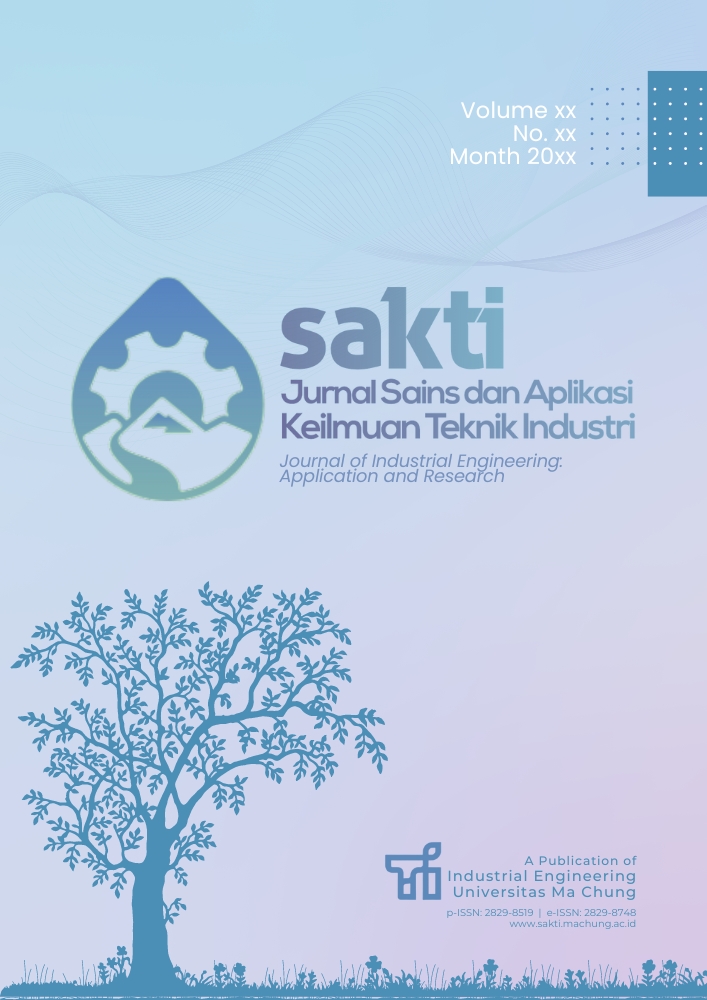Eco-friendly Corrosion Inhibitor Coatings Based on Plant Waste Extracts: A Comparative Study of Tea Waste and Orange Peel
Kata Kunci:
Corrosion rate, Inhibitor, Orange peel, Tea wasteAbstrak
This study seeks to assess the efficacy of plant-based waste extracts, namely orange peel extract and tea waste extract, as natural corrosion inhibitors for mild steel submerged in a 3.5% NaCl solution. The methodology adhered to ASTM G31 standards, employing mild steel specimens coated with each extract using three application techniques: brushing, immersion, and spraying. The weight loss method was used to measure corrosion rates (Mmpy), enabling the calculation of inhibition efficiency (IE%) for each specimen. The uncoated control specimen consistently exhibited the highest corrosion rate (3.4523 Mmpy), categorized as "Poor." Specimens treated with orange peel extract showed significantly lower corrosion rates, with the brushing method yielding an inhibition efficiency of 98.7%, categorized as "Excellent." Likewise, specimens coated with tea waste extract demonstrated remarkable inhibition, with the brushing and immersion techniques achieving efficiencies of 98.9% and 97.7%, respectively. These results indicate that both orange peel and tea waste extracts serve as promising, eco-friendly alternatives for corrosion protection of mild steel, with their effectiveness significantly influenced by the method of application.
Referensi
Al-Amiery, A., Isahak, W., & Al-Azzawi, W. (2024). Sustainable corrosion inhibitors: A key step towards environmentally responsible corrosion control. Ain Shams Engineering Journal.
Bernatonienė, J., & Kopustinskiene, D. (2018). The role of catechins in cellular responses to oxidative stress. Molecules, 23.
Bouoidina, A., Ech-Chihbi, E., El-Hajjaji, F., Ibrahimi, B., Kaya, S., & Taleb, M. (2021). Anisole derivatives as sustainable-green inhibitors for mild steel corrosion in 1 M HCl: DFT and molecular dynamic simulations approach. Journal of Molecular Liquids, 324, 115088.
Ferlazzo, N., Visalli, G., Cirmi, S., Lombardo, G., Laganà, P., Di Pietro, A., & Navarra, M. (2016). Natural iron chelators: Protective role in A549 cells of flavonoids-rich extracts of citrus juices in Fe(3+)-induced oxidative stress. Environmental Toxicology and Pharmacology, 43, 248–256.
Fontana, M. G. (1986). Corrosion engineering. Singapore: McGraw-Hill Book Co.
Mandal, S., Banik, D., Banik, S., Nandan, D., Ramapanicker, R., Gupta, R., & Mondal, K. (2024). From trash to treasure: Cattle manure as a potent green corrosion inhibitor. Bioresource Technology Reports.
Mazumder, M. (2020). Global impact of corrosion: Occurrence, cost and mitigation. Global Journal of Engineering Science, 5.
Omran, B., & Abdel-Salam, M. (2020). Basic corrosion fundamentals, aspects and currently applied strategies for corrosion mitigation. In Corrosion Science and Engineering (pp. 1–45). Springer.
Pham, T., Chihaia, V., & Son, D. (2024). Unravelling the effects of functional groups on the adsorption of 2-mercaptobenzothiazole on a copper surface: A DFT study. Physical Chemistry Chemical Physics.
Popoola, L. (2019). Progress on pharmaceutical drugs, plant extracts and ionic liquids as corrosion inhibitors. Heliyon,
Prasetya, R. H. (2015). Pengaruh konsentrasi inhibitor ekstrak daun teh terhadap laju korosi baja AISI E2512 media air laut (Skripsi, Universitas Negeri Jember). Jember.
Proença, C., Serrano, B., Correia, J., & Araújo, M. (2022). Evaluation of tannins as potential green corrosion inhibitors of aluminium alloy used in aeronautical industry. Metals, 12.
Salleh, S., Yusoff, A., Zakaria, S., Taib, M., Seman, A., Masri, M., Mohamad, M., Mamat, S., Sobri, S., Ali, A., & Teo, P. (2021). Plant extracts as green corrosion inhibitor for ferrous metal alloys: A review. Journal of Cleaner Production.
Tehrani, M., Ramezanzadeh, M., & Ramezanzadeh, B. (2021). A highly-effective/durable metal-organic anti-corrosion film deposition on mild steel utilizing Malva sylvestris (M.S) phytoextract-divalent zinc cations. Journal of Industrial and Engineering Chemistry, 95, 292–304.
Vorobyova, V., Sikorsky, O., Skiba, M., & Vasyliev, G. (2023). Quebracho tannin as corrosion inhibitor in neutral media and novel rust conversion agent for enhanced corrosion protection. South African Journal of Chemical Engineering.
Wu, Y., Zhang, Y., Jiang, Y., Qian, Y., Guo, X., Wang, L., & Zhang, J. (2020). Orange peel extracts as biodegradable corrosion inhibitor for magnesium alloy in NaCl solution: Experimental and theoretical studies. Journal of the Taiwan Institute of Chemical Engineers, 115, 35–46.
Zhang, L., Guan, Q., Jiang, J., & Khan, M. (2023). Tannin complexation with metal ions and its implication on human health, environment and industry: An overview. International Journal of Biological Macromolecules.









